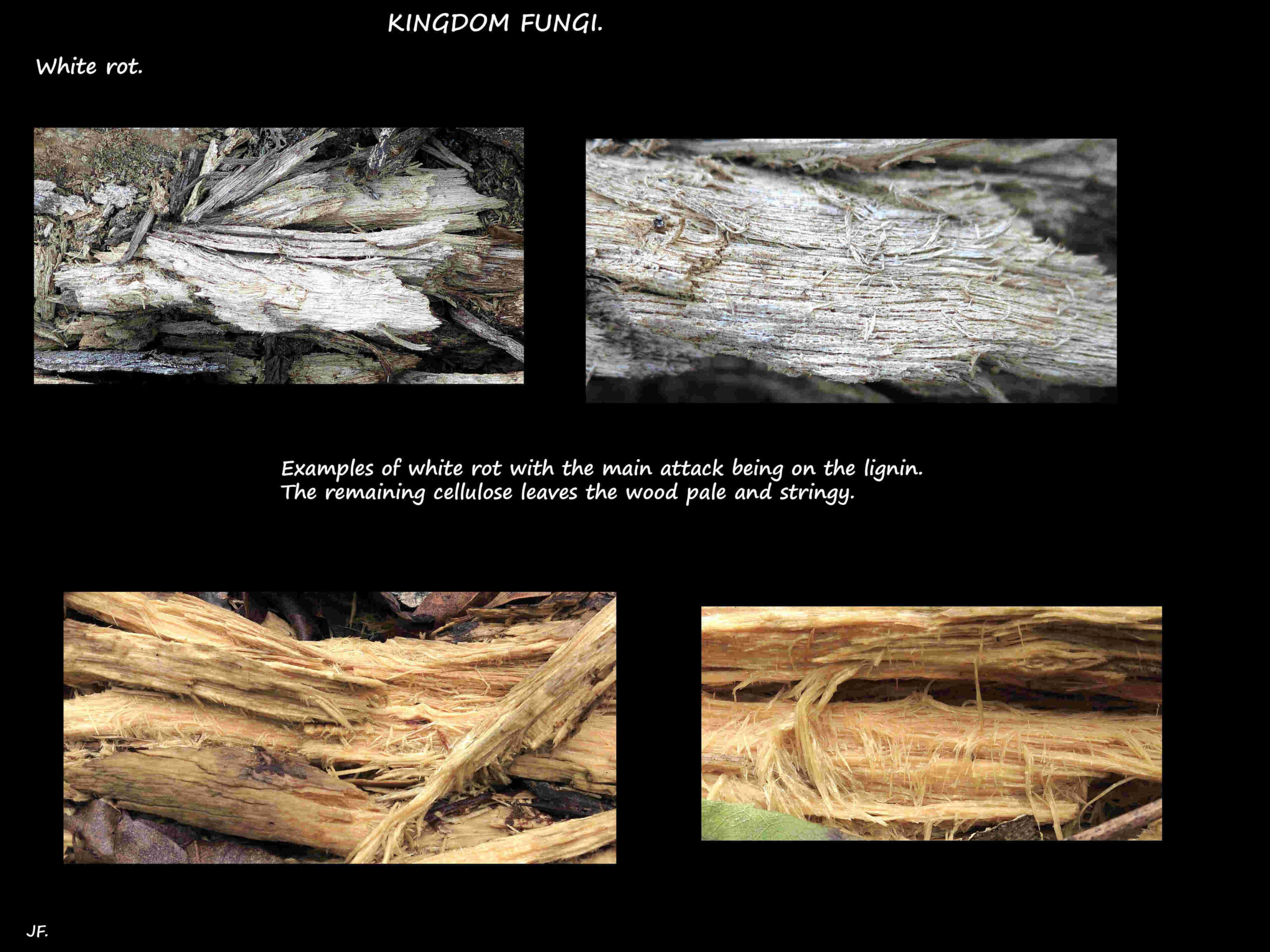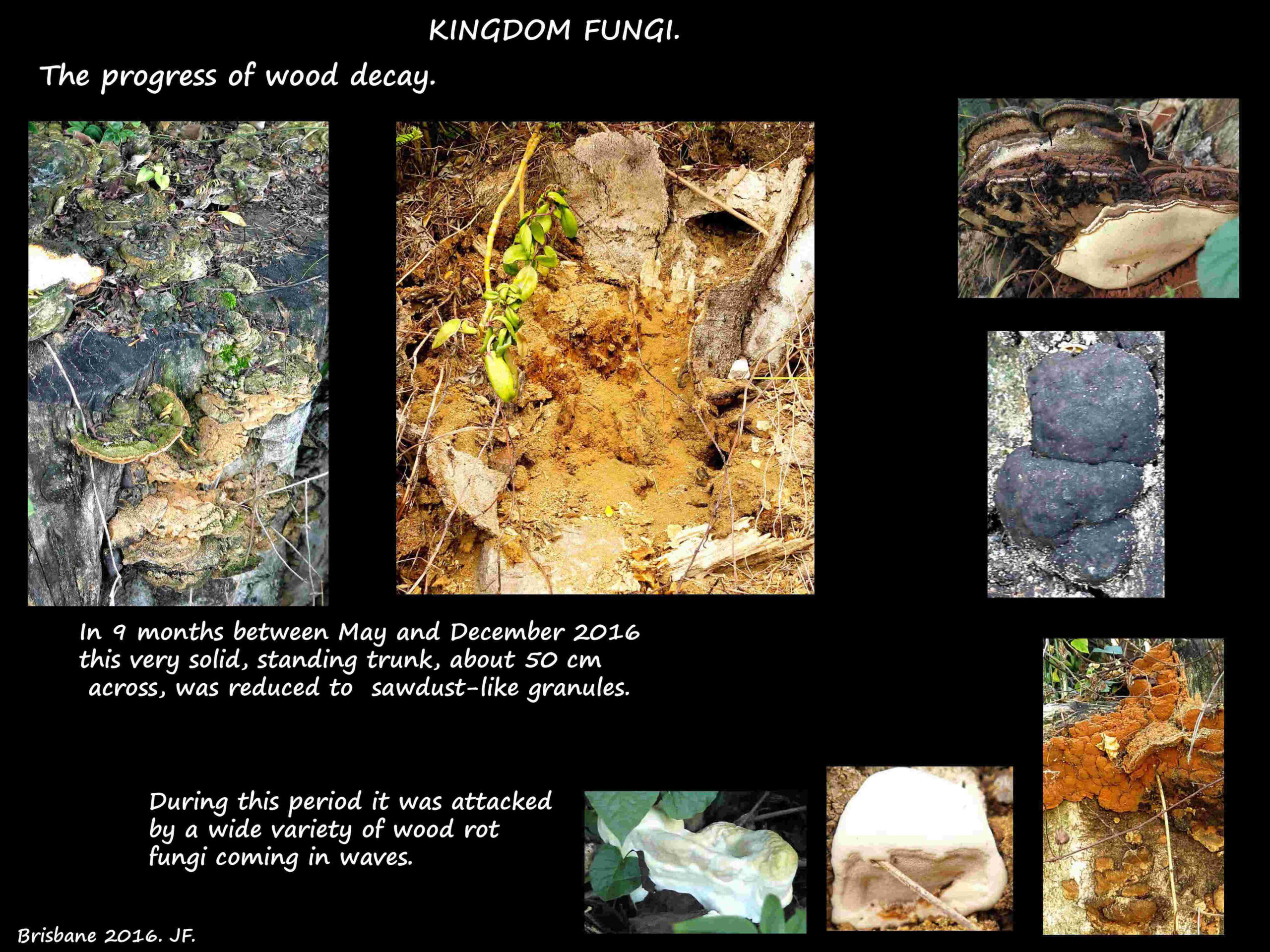White rot.
White-rot fungi can attack both the lignin and cellulose and eventually decay the wood completely.
They produce few enzymes but have strong oxidants, including hydrogen peroxide, which attack the lignin.
Cellulose is degraded by enzymes such as cellulase.
Some attack mainly the lignin, others the lignin and cellulose either simultaneously or sequentially.
These differences result in varying appearances of the decayed wood.
When the lignin is attacked first the remaining cellulose makes the wood pale and stringy.
When both are attacked together the wood is moist, soft, spongy, or stringy and white or yellow.
Decay may be confined to the cells colonised by the hyphae resulting initially in areas of advanced
decay surrounded by normal wood.
White-rot fungi are more numerous than the brown with thousands of species and include both
Ascomycetes and Basidiomycetes.
They are the only organisms able to completely degrade lignin.
White-rot fungi, such as the Shiitake mushroom, are often used as food.
J.F.



